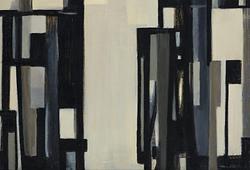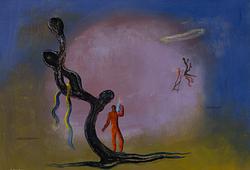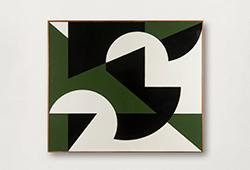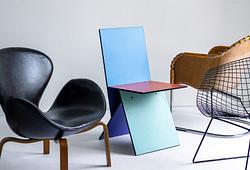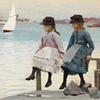Anders Zorn
"Kapprodd" ("Boat Race")
Signed Zorn and dated -86. Watercolour 29.5 x 44 cm.
Provenance
Konstföreningen, Stockholm (acquired for SEK 700), handed out as a prize in the lottery 1886; the collection of Consul Erik and Mrs. Lisa Brodin, Stockholm; the collection of Ph. D. Kåre and Mrs. Ingrid Bäckström, Djursholm; Stockholms Auktionsverk, "Kvalitetsauktion", 19-22 maj 1992, lot 4296 (illustrated full page in colour in the catalogue); private collection (acquired at the above Sale).
Exhibitions
Theodor Blanchs Konstsalong, Stockholm, "Konstnärsförbundets utställning", October - November 1886, no. 134 (illustrated full page in the catalogue).
Liljevalchs Konsthall, Stockholm, "Anders Zorn. Minnesutställning", 1 March - 6 April 1924, no. 296.
Nationalmuseum, Stockholm, "Opponenterna av 1885. Utställning till sextioårsminnet av det första moderna genombrottet i svensk konst", 16 March - 16 May 1945, no. 549.
Zornmuseet, Mora, Sweden, "Anders Zorn 1860-1960. Minnesutställning", 18 February - 15 August 1960, no. 71.
Nationalmuseum, Stockholm, "Anders Zorn 1860-1960. Minnesutställning", 2 September - 23 October 1960, no. 5.
Nasjonalgalleriet, Oslo, 24 August - 13 October 1985, no. 122.
Nationalmuseum, Stockholm, "1880-tal i nordiskt måleri", 25 October 1985 - 6 January 1986, no. 122.
Amos Anderssons Konstmuseum, Helsinki, 19 January - 9 March 1986, no. 122.
Statens Museum for Kunst, Copenhagen, 22 March - 18 May 1986, no. 122.
Zornmuseet, Mora, Sweden, "Zornmuseet 50 år", 10 June - 20 August 1989, no. 27.
Prins Eugens Waldemarsudde, Stockholm, "Anders Zorn. Till ögats fröjd och nationens förgyllning", 15 September -11 December 1994, no. 15.
Göteborgs Konstmuseum, Gothenburg, Sweden, "Anders Zorn. Till ögats fröjd och nationens förgyllning", 26 December 1994 - 26 March 1995, no. 15.
Literature
Tor Hedberg, "Anders Zorn. Ungdomstiden 1860-1893", SAK, 1923, mentioned p. 80 and illustrated p. 78.
Georg Nordensvan, "Sveriges Allmänna Konstförening 1832-1932", SAK, 1932, mentioned p. 166 and illustrated full page in colour, opposite p. 166.
Ernst Malmberg, 'Brodinska hemmet. Villagatan 6, Stockholm', article in (Ed.) Albin Roosval, "Svenska hem i ord och bilder", 1935, mentioned p. 225 and illustrated in interior photo p. 224.
Sixten Strömbom, "Konstnärsförbundets historia. I. Till och med 1890", 1945, illustrated p. 239 in the shape of reproduced illustration from Konstnärsförbundet's exhibition catalogue 1886.
"Konst i svenska hem", N:o 5, catalogued and illustrated p. 264 under collection 415: "Fil. Dr Kåre och Fru Ingrid Bäckström, Karlavägen 11, Djursholm".
Gerda Boëthius, "ZORN. Tecknaren. Målaren. Etsaren. Skulptören", 1949, mentioned p. 211 and catalogued under year 1886, p. 541.
Gerda Boëthius, "Anders Zorn. An international Swedish artist. His life and work", 1954, mentioned p. 29 (under the title "Boat Race").
Teddy Brunius and Oscar Reutersvärd, "Samtal om Zorn", 1979, mentioned and illustrated in colour under no. 35.
Anders Zorn, "Självbiografiska anteckningar", edited by Hans Henrik Brummer, 1982, mentioned p. 183 and illustrated in colour, p. 49.
Bo Lindwall, "Då och Nu. Svenskt konstliv under 150 år", SAK, 1982, illustrated half page in colour, p. 69.
Pontus Grate, 'Anders Zorn', article in exhibition catalogue, Nationalmuseum, Stockholm, "1880-tal i nordiskt måleri", 1985, pp. 282-283.
Hans Henrik Brummer, "ZORNMCMLXXXIX", 1989, mentioned p. 89 and illustrated full page in colour, p. 90.
Göran Hellström & Carl-Gustaf Petersén, ”Det stora konstspelet”, 1992, mentioned pp. 263-264.
Hans Henrik Brummer, "Till ögats fröjd och nationens förgyllning - Anders Zorn", 1994, mentioned p. 110, illustrated in colour, p. 107 and listed in the catalogue p. 336.
Gösta Maijgren, "Den vackre lotsens dotterdotter. En dalaröflicka berättar om sin uppväxttid", 2004, illustrated full page in colour on the cover.
More information
"Boat Race" is undoubtedly one of the absolute masterpieces within the entire ouevre of Zorn as a painter of watercolours.
The motif was painted in the fashionable seaside resort of Dalarö outside Stockholm.
After having lived in London between 1882 and 1885, Zorn returned home in June of that year to wed Emma Lamm. On October 16, the couple was married in a civil ceremony in Stockholm City Hall.
The Zorns honeymooned in Constantinople (now Istanbul), Turkey, then as now a cosmopolitan metropolis between the East and the West. In "Anders Zorn: Sweden's Master Painter" (exhibition catalogue, the Legion of Honor, San Francisco and the National Academy Museum, New York, 2013-2014) professor Johan Cederlund (director of the Zornsamlingarna [Zorn Collections] in the artist's hometown of Mora, Sweden) writes:
"There [in Constantinople] Zorn painted the 'Caique Oarsman', his most famous picture of the city. Other artists at that time depicted the exotic foreigness of what they saw, but Zorn was drawn to the rowers and the boats on the Bosporus River, the water, and the shimmering atmosphere over the city. He desired to capture the world just as it was, a world full of sensory impressions, and the path he took was completely his own".
In his autobiographical notes Zorn wrote:
"I never spent much time thinking about others' art. I felt that if I wanted to become something, then I had to go after nature with all my interest and energy, seek what I loved about it, and desire to steal its secret and beauty. I was entitled to become as great as anyone else, and in that branch of art so commanded by me, watercolour painting, I considered myself to have already surpassed all predecessors and contemporaries".
As director Cederlund subtly puts it: "Self-confidence was not an issue with Zorn".
The couple usually spent their summers on Dalarö, in Stockholm's archipelago, where Emma's mother rented a small house and the summer of 1886 was no exception. Director Cederlund, again, writes:
"Zorn portrayed in watercolors the carefree days of the seasonal guests at the fashionable seaside resort. Their first summer as newlyweds, in 1886, resulted in some of his most exquisite pictures in this setting, such as the idyllic 'Summer Vacation', showing a woman (Emma) on a jetty and a man in a rowboat below. Zorn's watercolors from Dalarö are formidable showpieces in the depiction of water and its continual movement. The sea became a recurring motif in his work, not only the coves of Stockholm's archipelago but also the coastlines of North Africa and Spain, the Bosporus, Venice's lagoon and the wild waves of the Atlantic".
"Boat Race" depicts the very same jetty (which still exists today) as is seen in the above mentioned "Summer Vacation" (which set an auction record for the artist in 2010 when it fetched a hammer price of SEK 26,000,000) from the same summer. Also recognizable from "Summer vacation" is the island called Korsholmen. In "Boat Race" however Zorn also added the island called Jutholmen (depicted in the background behind the girls).
The endearing scene captures four local children at play. The two girls on the jetty (sisters Ester and Thyra Dahlström) excitedly follow the boat race between their brother Teodor and their cousin Georg Engel.
More than just a conventional genre scene "Boat Race" is a picture in which Zorn demonstrates a masterly display of his technical abilities as a painter in watercolours. The rendering of light, conveying of atmosphere and the capturing of the continual movement of water and the effect on it from currents, winds and sunlight sets this watercolour apart as one of the absolutely unsurpassed masterpieces by Zorn.
As Zorn himself put it:
"What seems now to have particularly attracted me was the play of the water and the reflections, to really get the movement, put the ripples and everything in perspective and scientifically explain it all with meticulous sharpness".
Distinguished by its unparalleled beauty "Boat Race" is a work of crucial art historical importance.
Designer
Anders Zorn, born in Mora in 1860, showed artistic talent from a young age. In 1875, he traveled to Stockholm and became a student at the then Slöjdskolan (now Tekniska högskolan) in Stockholm, and shortly after, he joined the Royal Academy of Fine Arts. Initially, Zorn had aspirations of becoming a sculptor, but soon watercolor painting took over, becoming his primary medium until 1887. At the student exhibition in 1880, Zorn had his breakthrough with the watercolor painting "I sorg." The following year, he gained international acclaim as a portrait painter. His watercolor painting reached its pinnacle during this period, and his most famous work from this time is "Vårt dagliga bröd” from 1886. Shortly thereafter, Zorn transitioned to oil painting, which was met with immediate success. Zorn's reputation mainly rested on his portrait art, and he portrayed many notable figures, including presidents. For instance, he created an etching of Theodore Roosevelt. His etchings significantly contributed to his success. In the late 1880s, Zorn began working in the genre that would increasingly become his trademark: nude figures in outdoor settings. He had long been fascinated by the movement of water and the reflections of light on its surface. Now, he added the complexity of placing a model near or in the water, aiming to depict a synthesis between nature and humanity. In 1896, Zorn and his wife moved back to Sweden and settled in Zorngården in Mora. This move sparked a renewed interest in his homeland, which would be reflected in his future paintings. Among the artist's scenes from the Mora region, portraying its local customs and ancient traditions, "Midsommardansen" holds the highest value according to Zorn himself. Today, the painting can be found at the National Museum.
Read more




